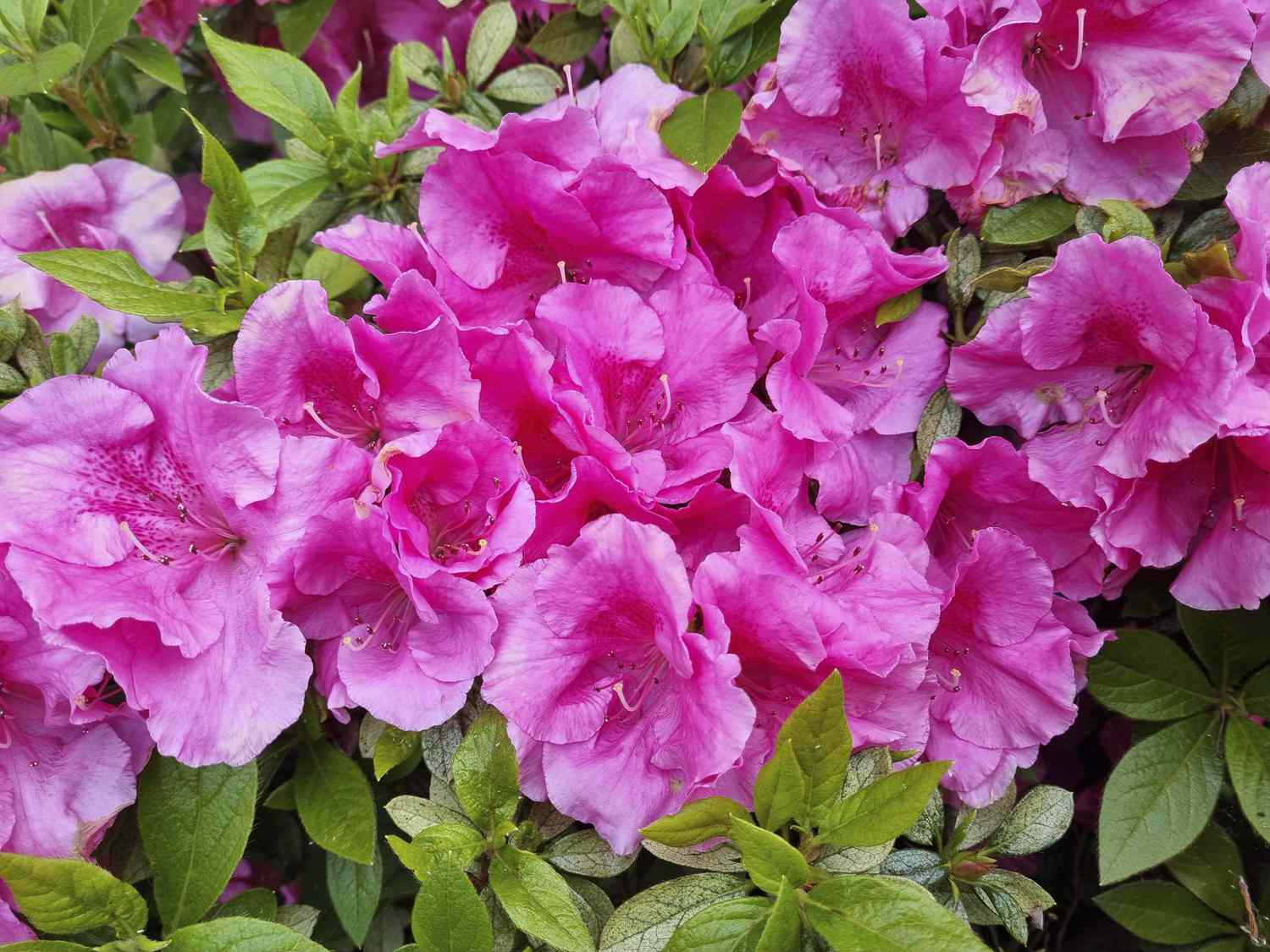
Why Isn’t My Azalea Bush Blooming? Gardening Pros Weigh In
Nothing’s more exciting than those first blooms of spring—and gorgeous azalea bushes put on quite a show with their brightly hued flowers. But if your azalea bushes are a bit devoid of flowers this spring, you might be wondering what happened, and what you can do to get them back on track.
Reasons Your Azalea Bush Isn’t Blooming
It may take a little trial and error to figure out why your azaleas aren’t blooming, but here are some suggestions for where to start.
You pruned at the wrong time
You may want to prune your azalea bushes yearly to keep them in good shape—but there’s a short window of time when you can successfully prune without accidentally lopping off your blooms. “Azaleas set flower buds the year before,” says Megan McConnell, plant information director at Monrovia. “Always prune just after flowering to avoid cutting off next season’s blooms.”
Your azalea isn’t getting the right amount of light
Azaleas need that sort of Goldilocks, “just right” amount of sunshine, so the lighting could be to blame for the lack of blooms. “Azaleas prefer dappled sunlight or morning sun with afternoon shade,” says Kevin Lenhart, design director at Yardzen. “Too much shade will lead to fewer blooms, but too much sun will stress the plant out.”
You may need to move the plant to ensure that it gets the right amount of light, or prune overhead branches that are keeping it in the shade. Aim for at least four hours of sunlight per day, says Tamara Hogan, plant expert at Fast Growing Trees. “Flowers require energy to produce so the plant isn’t going to invest in that work if the plant does not have adequate ways to supply itself with that energy.”
Your plant has been fed too much nitrogen
When you’re fertilizing your azalea, choose a fertilizer that focuses on blooms. “Excess nitrogen promotes leafy growth at the expense of flowers,” Lenhart says. “This often happens when azaleas receive lawn fertilizer runoff.”
“Phosphorus is the main nutrient to help with blooms and root production,” Hogan says. “If you find that your plant is not really pushing a lot of blooms, using a product like a root stimulator with a higher amount of phosphorus will also help to promote blooms.”
Your azalea has too much—or too little—water
Azaleas thrive in moist, well-drained soil—and if it’s too dry or too wet, it can cause bloom problems. “Too little water stresses them, while too much can lead to root rot, affecting bud formation,” Lenhart says. He suggests a deep watering once or twice a week if you don’t get enough rain, and mulching to help retain moisture.
The soil is too alkaline
Alkaline soil could be to blame for the lack of blooms, McConnell says. You can test your soil’s pH—and if it’s too alkaline, you can add elemental sulfur to the soil, a specialized azalea fertilizer, or even a pine needle mulch to boost the acidity of the soil. Another sign that your soil is too alkaline? Yellow leaves with green veins, Lenhart says.
Weather damaged the plants
Bad weather—even the year before—could impact your spring blooms, McConnell says. “Drought the prior year can kill the buds. Winter cold can kill the buds, as can not enough cold. And bud blast—unseasonably warm fall weather—can trick the buds into opening too early.”
The azaleas were attacked by pests or deer
Different bugs and animals (like deer) enjoy azaleas—and can be eating your blooms. “Azalea lace bug has become a growing problem, and in some areas, can be the biggest challenge to growing azaleas,” McConnell says. “These tiny insects cause stippling on leaves, sometimes to the extent that the leaves turn bronze. You’ll find the insects on the bottom side of the leaves. Insect pests target struggling plants first, so keeping your azalea happy is the first step to preventing this problem.”
Signs That Your Azalea Needs a Little Help
Besides a lack of blooms, there may be other signs that your azalea isn’t doing well. “Azaleas communicate stress through their leaves,” Lenhart says. Watch for yellow leaves, which could indicate overwatering, crispy leaves that show it’s too dry, and spotted leaves, which may point to a fungal issue.










